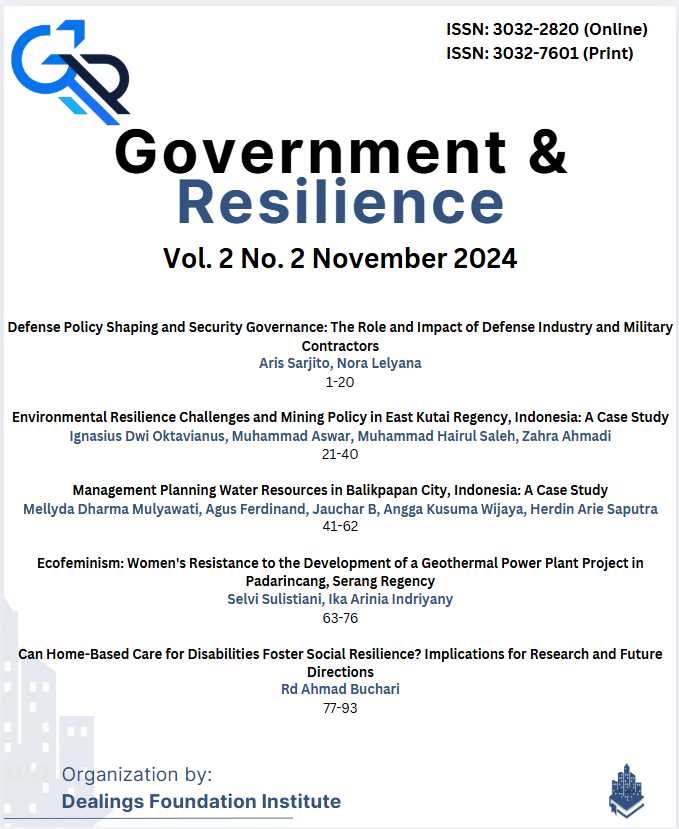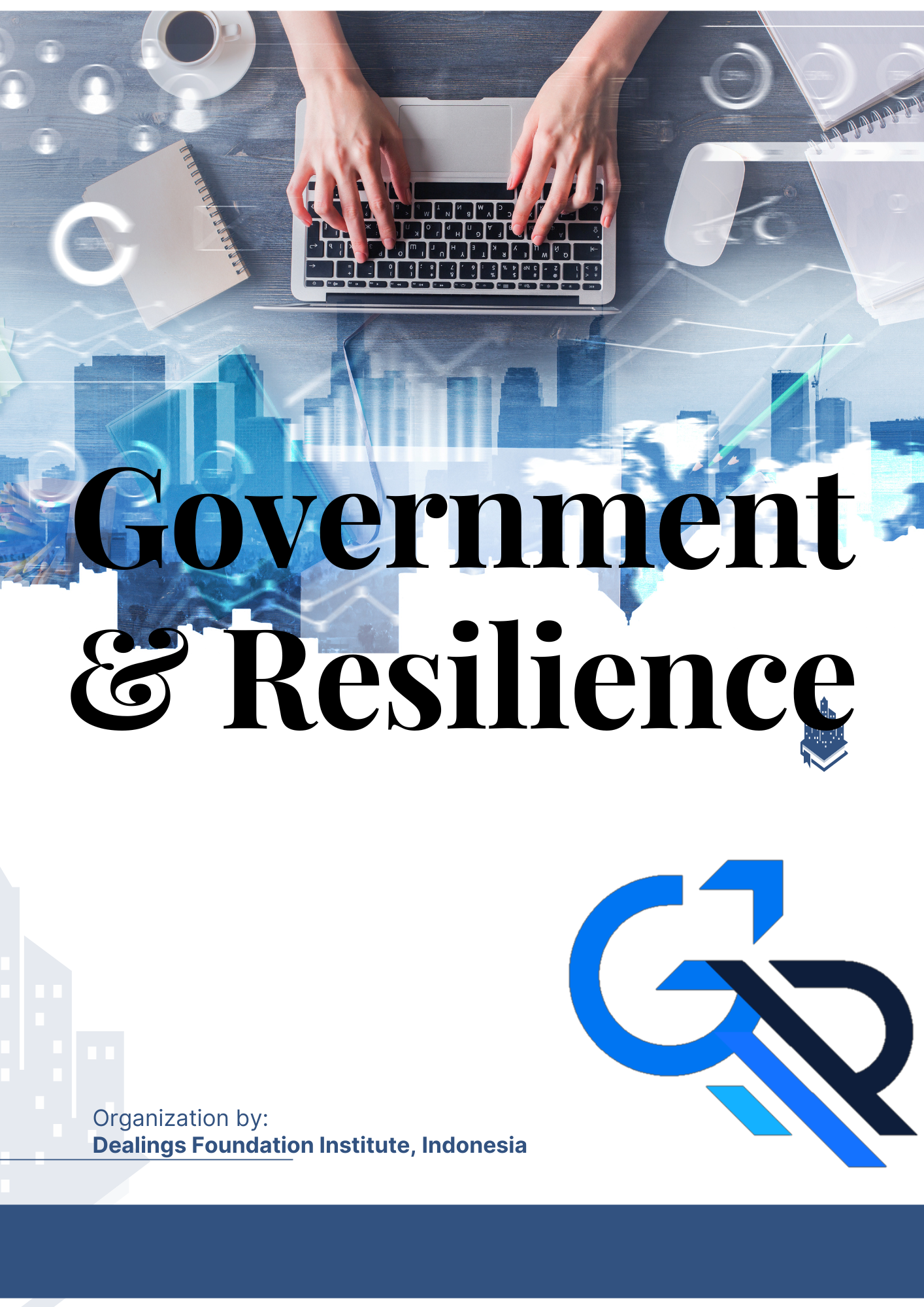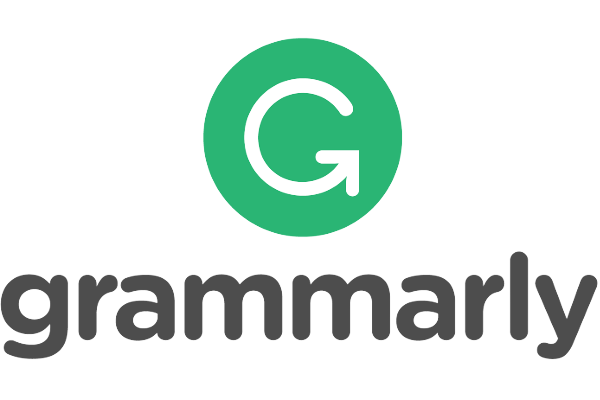Management Planning Water Resources in Balikpapan City, Indonesia: A Case Study
DOI:
https://doi.org/10.62503/gr.v2i2.17Keywords:
Water Governance, Climate Change, Sustainable Development, Water Resource Management, IndonesiaAbstract
This study aims to investigate the role of water resource management in Balikpapan City, Indonesia, focusing on how the city government implements sustainable development and water governance practices. Using a qualitative approach and literature review, this research examines Balikpapan’s strategies for addressing water challenges amid climate change, population growth, and its role within the Indonesian Capital City (Ibu Kota Nusantara, IKN) area. Findings reveal that Balikpapan’s regional development plan has adopted a sustainable approach, emphasizing prevention and mitigation efforts to secure long-term water resources. In addition to constructing new infrastructure, Balikpapan is exploring collaboration with neighboring administrative areas to ensure a reliable water supply in the future. Nonetheless, there is a need for stronger partnerships with the private sector, especially to support technological innovations that, while potentially costly, could enhance water management. Public participation is also essential to prevent social conflicts and to ensure that development progresses fairly and inclusively. By engaging diverse stakeholders—including the government, private sector, and community—in planning and implementation, Balikpapan and IKN Nusantara can work towards sustainable development goals that prioritize environmental responsibility and meet the needs of all communities. This collaborative approach can foster sustainable, equitable solutions that align with global goals, supporting a resilient and water-secure future for Balikpapan and its surrounding areas.
References
Alihar, F. (2018). Penduduk dan Akses Air Bersih di…| Fadjri Alihar PENDUDUK DAN AKSES AIR BERSIH DI KOTA SEMARANG (POPULATION AND ACCESS TO CLEAN WATER IN SEMARANG CITY). Jurnal Kependudukan Indonesia |, 13(Juni), 67–76.
Aprilianadi, F., & Noor, M. (2024). STRATEGI PENGEMBANGAN PARIWISATA PESISIR DI DESA PASIR MAYANG KABUPATEN PASER. 2024(4), 417–427.
Arguëllo, M. (2018). Generating critical knowledge and tools for sustainable management of water resources in the Andes. Mountain Research and Development, 38(4), 401–403. https://doi.org/10.1659/MRD-JOURNAL-D-18-00095.1
Ashton, P. J. (n.d.). Avoiding Conflicts Over Africa’s Water Resources.
Badan Pusat Statistik Kota Balikpapan. (2024). Kota Balikpapan Dalam Angka Balikpapan Municipality in Figures 2024.
Bartz, R., Heink, U., & Kowarik, I. (2010). Propuesta de definición de daño ambiental ilustrada por los casos de cultivos modificados genéticamente y especies invasoras. Conservation Biology, 24(3), 675–681. https://doi.org/10.1111/j.1523-1739.2009.01385.x
Basant Maheshwari, V. P. S. B. (2016). Balanced Urban Development: Options and Strategies for Liveable Cities. http://www.springer.com/series/6689
Batterman, S., EIsenberg, J., Hardin, R., Kruk, M. E., Lemos, M. C., Michalak, A. M., Mukherjee, B., Renne, E., Stein, H., Watkins, C., & Wilson, M. L. (2009). Sustainable control of water-related infectious diseases: A review and proposal for interdisciplinary health-based systems research. In Environmental Health Perspectives (Vol. 117, Issue 7, pp. 1023–1032). https://doi.org/10.1289/ehp.0800423
Benavot, A. (2017). Education for people, prosperity and planet: Can we meet the sustainability challenges? In European Journal of Education (Vol. 52, Issue 4, pp. 399–403). Blackwell Publishing Ltd. https://doi.org/10.1111/ejed.12248
Benson, D., Gain, A. K., & Rouillard, J. J. (n.d.). Water Governance in a Comparative Perspective: From IWRM to a “Nexus” Approach? www.water-alternatives.org
Boberg, J. (n.d.). Chapter Title: Approaches to Sustainable Water Management Book Title: Liquid Assets Book Subtitle: How Demographic Changes and Water Management Policies Affect Freshwater Resources. https://doi.org/10.7249/mg358cf.13
Bogin, B., & Varea, C. (2020). Evolution of Human Life History. In Evolutionary Neuroscience (pp. 753–767). Elsevier. https://doi.org/10.1016/B978-0-12-820584-6.00031-3
Booth, C. A., & Charlesworth, S. M. (2014). Water Resources in the Built Environment: Management Issues and Solutions.
Cadotte, M. W., Dinnage, R., & Tilman, D. (n.d.). Phylogenetic diversity promotes ecosystem stability 4 5 6.
Cameron, M., & Coates, K. (n.d.). Macdonald-Laurier Institute Report Part Title: Understanding water treatment Report Title: The WATER CONUNDRUM and Indigenous communities in Canada.
Camkin, J., & Neto, S. (n.d.). ROLES, RIGHTS, AND RESPONSIBILITIES IN WATER GOVERNANCE: Reframing the Water Governance Debate. http://www.gwp.org/About-GWP/The-network/.
Carr, R., Kotz, M., Pichler, P.-P., Weisz, H., Belmin, C., & Wenz, L. (2024). Climate change to exacerbate the burden of water collection on women’s welfare globally. Nature Climate Change. https://doi.org/10.1038/s41558-024-02037-8
Chen, H., Zhu, Q., Peng, C., Wu, N., Wang, Y., Fang, X., Gao, Y., Zhu, D., Yang, G., Tian, J., Kang, X., Piao, S., Ouyang, H., Xiang, W., Luo, Z., Jiang, H., Song, X., Zhang, Y., Yu, G., … Wu, J. (2013). The impacts of climate change and human activities on biogeochemical cycles on the Qinghai-Tibetan Plateau. Global Change Biology, 19(10), 2940–2955. https://doi.org/10.1111/gcb.12277
Daigger, G. T. (2009). Evolving Urban Water and Residuals Management Paradigms: Water Reclamation and Reuse, Decentralization, and Resource Recovery. Water Environment Research, 81(8), 809–823. https://doi.org/10.2175/106143009x425898
G. Fred Lee, R. A. J. B. W. N. (1982). Water Quality Standards and Water Quality. https://doi.org/10.2307/25041632
García-Ávila, F., Avilés-Añazco, A., Sánchez-Cordero, E., Valdiviezo-Gonzáles, L., & Ordoñez, M. D. T. (2021). The challenge of improving the efficiency of drinking water treatment systems in rural areas facing changes in the raw water quality. South African Journal of Chemical Engineering, 37, 141–149. https://doi.org/10.1016/j.sajce.2021.05.010
Geoff Syme. (n.d.). Sustainability in urban water futures. https://about.jstor.org/terms
Ginting, G. H. (2023). Urgensi Pemberdayaan Masyarakat Lokal Perspektif Kemanan dan Ketertiban Makanan di Ibu Kota Negara.
Gober, P., & Kirkwood, C. W. (2010). Vulnerability assessment of climate-induced water shortage in Phoenix. Proceedings of the National Academy of Sciences of the United States of America, 107(50), 21295–21299. https://doi.org/10.1073/pnas.0911113107
Gozali, G., Kusuma, B. J., & Mulyanto, S. (2021). Penerapan Teknologi Pengolahan Dan Peningkatan Distribusi Air Bersih Di Lingkungan Masyarakat RT 36 Kelurahan Graha Indah. Jurnal Karya Abdi Masyarakat, 4(3), 660–666. https://doi.org/10.22437/jkam.v4i3.11592
Groenfeldt, D., & Schmidt, J. J. (2013). Ethics and water governance. Ecology and Society, 18(1). https://doi.org/10.5751/ES-04629-180114
Gupta, J., & Pahl-Wostl, C. (2013). Editorial on global water governance. In Ecology and Society (Vol. 18, Issue 4). https://doi.org/10.5751/ES-06115-180454
Hardberger, A. (2005). Life, Liberty, and the Pursuit of Water: Evaluating Water as a Human Right and the Duties and Obligations it Creates Recommended Citation Life, Liberty, and the Pursuit of Water: Evaluating Water as a Human Right and the Duties and Obligations it Creates. In Northwestern Journal of International Human Rights (Vol. 4, Issue 2). http://scholarlycommons.law.northwestern.edu/njihr/vol4/iss2/3
Hevner, A. R. (n.d.). Design Science in Information Systems Research.
Hicklin, J. (2024). Taking the Lead: Rechanneling SDRs to Create and Leverage a New Global Resilience Trust at the IMF. https://about.jstor.org/terms
Hodder, I. (2014). The entanglements of humans and things: A long-term view. In New Literary History (Vol. 45, Issue 1, pp. 19–36). Johns Hopkins University Press. https://doi.org/10.1353/nlh.2014.0005
Holt, M. S. (n.d.). Sources of Chemical Contaminants and Routes into the Freshwater Environment. www.elsevier.com/locate/foodchemtox
Idris, A. S., Syaifuddin, T. I., Effendi, S. N., Alaydrus, A., Idris, A., & B, J. (2023). Corporate Social Responsibility and Sustainable Development Goals: How the Mining Industry Supports Quality Education in Paser Regency (pp. 30–44). https://doi.org/10.2991/978-2-38476-194-4_4
Ikuho Miyazawa. (2012). Institute for Global Environmental Strategies What are Sustainable Development Goals?
Jason Thistlethwaite and Melissa Menzies. (2016). ASSESSING THE GOVERNANCE PRACTICES OF SUSTAINABILITY REPORTING.
John W. Creswell. (2018). Research Design Qualitative, Quantitative, and Mixed Methods Approaches Fifth Edition.
Kalalinggi, R., Hisdar, M., Sarmiasih, M., & Wijaya, A. K. (2023). Forecasting The Development of IKN (New National Capital) in Sustainable Development, Indonesia. Journal of Governance and Public Policy, 10(1), PRESS. https://doi.org/10.18196/jgpp.v10i1.16786
Ketut Gunawan, I. (2024). Ethnic Fractionalization, Ethnic Polarization, and Potential Conflict in Parent Districts of IKN. Jurnal Ilmu Sosial Dan Humaniora, 13(1), 38–51. https://doi.org/10.23887/jish.v13i1.69381
Khanya. (2000). DEVELOPMENT PLANNING.
Kraisoraphong, K., & Rajaratnam, S. (2010). S. Rajaratnam School of International Studies Water Regime Resilience and Community Rights to Resource Access in the Face of Climate Change. In School of International Studies.
Kuczynski, R. R. (1928). The World’s Population. In Source: Foreign Affairs (Vol. 7, Issue 1). https://www.jstor.org/stable/20028661
Kusumah, R. I., & Mustofa, M. U. (2020). Kajian Teoritis Water Governance Untuk Pengelolaan Air Di Indonesia. Jurnal JISIPOL Ilmu Pemerintahan Universitas Bale Bandung, 4(1), 29–51.
Liu, B., Martre, P., Ewert, F., Porter, J. R., Challinor, A. J., Müller, C., Ruane, A. C., Waha, K., Thorburn, P. J., Aggarwal, P. K., Ahmed, M., Balkovič, J., Basso, B., Biernath, C., Bindi, M., Cammarano, D., De Sanctis, G., Dumont, B., Espadafor, M., … Asseng, S. (2019). Global wheat production with 1.5 and 2.0°C above pre-industrial warming. Global Change Biology, 25(4), 1428–1444. https://doi.org/10.1111/gcb.14542
Loucks, D. P., & Van Beek, E. (n.d.). Water Resource Systems Planning and Management An Introduction to Methods, Models, and Applications.
M. Thennakoon, U. G. U. D. Z. (n.d.). Session V-Environmental Economics for Resource Management (244) Analysis of Water Management towards Achieving Sustainable Development Goal 6 (Clean Water and Sanitation for All); Case Study of WilpitaWewa (Hali-Ella), Kamburupitiya, Sri Lanka.
Ma’mun, A. R. (2023). Problematika Komunikasi Politik Pendanaan Pembangunan Ibu Kota Negara Nusantara. POLITICOS: Jurnal Politik Dan Pemerintahan, 3(1), 1–16. https://doi.org/10.22225/politicos.3.1.2023.1-16
Manzungu, E. (n.d.). Water For All: Improving Water Resource Governance in Southern Africa. https://about.jstor.org/terms
Miranda, L., Hordijk, M., & Torres Molina, R. K. (2011). LITERATURE REVIEW Water Governance Key Approaches: An Analytical Framework Literature Review.
Mishra, B. K., Kumar, P., Saraswat, C., Chakraborty, S., & Gautam, A. (2021). Water security in a changing environment: Concept, challenges and solutions. Water (Switzerland), 13(4). https://doi.org/10.3390/w13040490
Moritz, C., & Agudo, R. (2013). The future of species under climate change: Resilience or decline? In Science (Vol. 341, Issue 6145, pp. 504–508). American Association for the Advancement of Science. https://doi.org/10.1126/science.1237190
Naumann, G., Alfieri, L., Wyser, K., Mentaschi, L., Betts, R. A., Carrao, H., Spinoni, J., Vogt, J., & Feyen, L. (2018). Global Changes in Drought Conditions Under Different Levels of Warming. Geophysical Research Letters, 45(7), 3285–3296. https://doi.org/10.1002/2017GL076521
Pemerintah Kota Balikpapan. (2021). Peraturan Daerah Kota Balikpapan No 6 Tahun 2021 tentang Rencana Pembangunan Jangka Menengah Daerah (RPJMD) Kota Balikpapan Tahun 2021-2026 (Issue September, pp. 1–346).
Puji Isyanto, & Dedi Mulyadi. (2020). Kajian Analisis Kebutuhan Air Bersih Bagi Warga Masyarakat dan Perusahaan (Studi Pada Kecamatan Ciampel, Kecamatan Klari dan Kecamatan Purwarasi). Buana Ilmu, 5(1), 1–14. https://doi.org/10.36805/bi.v5i1.1210
R. Craig Kirkpatrick. (n.d.). Ecology, Government Legitimacy, and a Changing World Order.
Reddy, B. S., & Snehalatha, M. (2011). Sanitation and personal hygiene: What does it mean to poor and vulnerable women? Indian Journal of Gender Studies, 18(3), 381–404. https://doi.org/10.1177/097152151101800305
Riviwanto, M., & Dwiyanti, D. (2019). Kerentanan Ketersedian Air Bersih dan Penyakit Akibat Perubahan Iklim dan Strategi Adaptasi. Dampak, 16(2), 123. https://doi.org/10.25077/dampak.16.2.123-130.2019
Robert A. Holt. (2016). Wastewater Discharges from Water Treatment Plants.
Sachs, J. D. (2012). From millennium development goals to sustainable development goals. In The Lancet (Vol. 379, Issue 9832, pp. 2206–2211). Elsevier B.V. https://doi.org/10.1016/S0140-6736(12)60685-0
Schnoor, J. L. (n.d.). Water Unsustainability. https://about.jstor.org/terms
Singh, B. K., Delgado-Baquerizo, M., Egidi, E., Guirado, E., Leach, J. E., Liu, H., & Trivedi, P. (2023). Climate change impacts on plant pathogens, food security and paths forward. In Nature Reviews Microbiology (Vol. 21, Issue 10, pp. 640–656). Nature Research. https://doi.org/10.1038/s41579-023-00900-7
Spinoni, J., Naumann, G., Carrao, H., Barbosa, P., & Vogt, J. (2014). World drought frequency, duration, and severity for 1951-2010. International Journal of Climatology, 34(8), 2792–2804. https://doi.org/10.1002/joc.3875
Suseno, N. V., & Widyastuti, M. (2017). Analisis Kualitas Air PDAM Tirta Manggar Kota Balikpapan. Journal of Physics A: Mathematical and Theoretical, 6(1), 1–8. https://doi.org/10.1088/1751-8113/44/8/085201
Talukdar, I. H., Rifat, M. A., Sarkar, P., Saha, N., Tessma, M. K., & Miah, M. I. (2023). Perceived difficulties in maintaining menstrual hygiene practices among indigenous adolescents during seasonal water scarcity periods in Bandarban hill district of Bangladesh: A cross-sectional study. International Journal of Hygiene and Environmental Health, 254. https://doi.org/10.1016/j.ijheh.2023.114268
Teymouri, P., & Dehghanzadeh, R. (2022). Climate change and water-related diseases in developing countries of Western Asia: a systematic literature review. In Climate and Development (Vol. 14, Issue 3, pp. 222–238). Taylor and Francis Ltd. https://doi.org/10.1080/17565529.2021.1911773
Tröger, R., Ren, H., Yin, D., Postigo, C., Nguyen, P. D., Baduel, C., Golovko, O., Been, F., Joerss, H., Boleda, M. R., Polesello, S., Roncoroni, M., Taniyasu, S., Menger, F., Ahrens, L., Lai, F. Y., & Wiberg, K. (2021). What’s in the water? – Target and suspect screening of contaminants of emerging concern in raw water and drinking water from Europe and Asia. Water Research, 198. https://doi.org/10.1016/j.watres.2021.117099
Turnbull, J. W., Clark, G. F., & Johnston, E. L. (2021). Conceptualising sustainability through environmental stewardship and virtuous cycles—a new empirically-grounded model. Sustainability Science, 16(5), 1475–1487. https://doi.org/10.1007/s11625-021-00981-4
Waage, J., Yap, C., Bell, S., Levy, C., Mace, G., Pegram, T., Unterhalter, E., Dasandi, N., Hudson, D., Kock, R., Mayhew, S. H., Marx, C., Poole Book, N., & Editor, B. (2015). Ubiquity Press Chapter Title: Governing Sustainable Development Goals: interactions, infrastructures, and institutions Chapter Title: Thinking Beyond Sectors for Sustainable Development. Ubiquity Press.
Woodhouse, P., & Muller, M. (2017). Water Governance—An Historical Perspective on Current Debates. In World Development (Vol. 92, pp. 225–241). Elsevier Ltd. https://doi.org/10.1016/j.worlddev.2016.11.014
Wulandari, putri ayu. (2022). Kapasitas Pemerintah Kota Balikpapan Mengatasi Masalah Krisis Air Bersih. december, 44.
Zahid, J. (n.d.). Sustainable Development Policy Institute Impact of Clean Drinking Water and Sanitation on Water Borne Diseases in. https://www.jstor.org/stable/resrep17223
Downloads
Published
How to Cite
Issue
Section
License
Copyright (c) 2024 Government & Resilience

This work is licensed under a Creative Commons Attribution-NonCommercial-ShareAlike 4.0 International License.
1. Licence
Use of articles will be governed by the Creative Commons Attribution-NonCommercial-ShareAlike 4.0 International license as currently displayed on the Creative Commons Attribution-NonCommercial-ShareAlike 4.0 International License (CC BY-NC-SA 4.0).
2. Author(s)' Warranties
The author warrants that the article is original, written by the stated author(s), has not been published before, contains no unlawful statements, does not infringe the rights of others, is subject to copyright that is vested exclusively in the author and free of any third-party rights, and that any necessary written permissions to quote from other sources have been obtained by the author(s).
3. User Rights
The spirit of Government & Resilience is to disseminate articles published as freely as possible. Under the Creative Commons license, Government & Resilience permits users to copy, distribute, display, and perform the work. Users will also need to attribute authors and Government & Resilience for distributing works in journals and other media of publication.
4. Rights of Authors
Authors retain all their rights to the published works, such as (but not limited to) the following rights:
1. Copyright and other proprietary rights relating to the article, such as patent rights,
2. The right to use the substance of the article in future works, including lectures and books,
3. The right to reproduce the article for own purposes,
4. The right to enter into separate, additional contractual arrangements for the non-exclusive distribution of the article's published version (e.g., post it to an institutional repository or publish it in a book), with an acknowledgment of its initial publication in this journal (Government & Resilience).
5. Co-Authorship
If the article was jointly prepared by more than one author, any author submitting the manuscript warrants that he or she has been authorized by all co-authors to agree on this copyright and license notice (agreement) on their behalf and agrees to inform his or her co-authors of the terms of this policy. Government & Resilience will not be held liable for anything that may arise due to the author's internal dispute. Government & Resilience will only communicate with the corresponding author.
6. Royalties
Being an open-access journal and disseminating articles for free under the Creative Commons license term mentioned, the author(s) are aware that Government & Resilience entitles the author(s) to no royalties or other fees.











